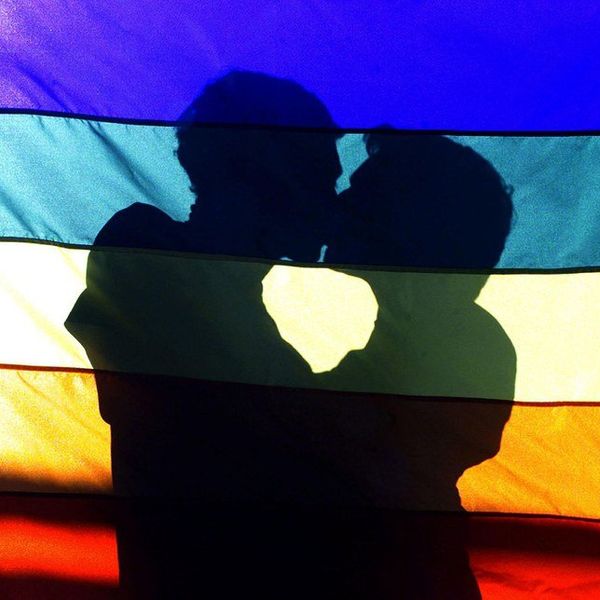The media is constantly facing criticism. People don't like the way that things are being handled by the media. One issue that the media is often criticized for is their lack of representation. There are many groups of people who are incredibly underrepresented in mass media, and that needs to change. One of these groups is the LGBT community.
Even though there is more LGBT representation on TV today than in the past, it is still not much. Each year, GLAAD analyzes TV characters and compiles their "Where We Are On TV" report. They do this each year to track the progress of diversity on TV: they include data about LGBT, gender and racial diversity.
In their most recent report (with data from the 2015-2016 TV season), they found that only 35 of 881 regular characters on broadcast (ABC, FOX, NBC, The CW and CBS) scripted primetime shows were either gay, lesbian or bisexual. That's 4 percent. This means that viewers can infer the other 96 percent of regular characters on these shows are, assumingly, straight.
GLAAD also only reported 35 LGB recurring characters on broadcast primetime television. Yes, LGB. There are currently no transgender characters represented on primetime broadcast shows. The only transgender representation on TV comes from cable or reality shows, but this group is still unacceptably small. There are only three recurring transgender characters represented on cable (two of these are transgender females, and one was killed off).
The recently-cancelled MTV show "Faking It" was incredibly important to LGBT representation on TV. The show was based at a high school where it was cool to be different, and being gay meant being popular. Although this was an unrealistic representation of being LGBT in high school, it had the highest amount of LGBTQ+ characters in 2015-2016 with a total of nine. Many of its main characters were gay or bisexual, and it had television's only transgender male, asexual and intersex characters.
A few TV shows like "The 100" and "Supernatural" have faced criticism for queerbaiting, which is when a show introduces a queer relationship only to have it go nowhere. They do this because it brings in more queer audience members, giving them a more diverse (and typically more liberal) audience. More and more shows are becoming more inclusive to members of the LGBT community, but they still are not always for the right reasons.
Even though many broadcast and cable networks have improvements to make, the lack of LGBT diversity is even more of an issue in the film industry. GLAAD also reports on diversity in films from the major studios (20th Century Fox, Lionsgate Entertainment, Paramount Pictures, Sony Columbia, Universal Pictures, Walt Disney Studios and Warner Brothers) in their Studio Responsibility Index (SRI). Only 22 of the 126 films that GLAAD studied contained LGBT characters, and two of the companies they studied did not include any LGBT characters in their films.
Of the LGBT characters included in these films in the most current study (2016), 77 percent were gay men. This is an obvious difference from the 44 percent of gay male characters who appeared on TV, which is much more inclusive to lesbians and bisexual men and women than film. It also hints to how behind the film industry is with diversity. TV hasn't had such a disproportionate gender ratio since 2006. The film industry also is less racially diverse. The amount of racially diverse LGBT characters in film this year was only 25 percent. TV isn't doing much better at 31 percent, but is getting there.
There is also a problem with negative LGBT representation in film. GLAAD found that LGBT representation was most common in comedies, but several of the major comedy films were offensive and degrading to the LGBT community.
Viewers are taking notice of this lack of positive representation and are calling on the creators of "Frozen" and "Captain America" to give their main characters same-sex partners in the next movies. The supporters of this movement believe that children need to be exposed to more gay couples in mainstream media. People are being very critical of Disney because they have not included any LGBT characters in any of their films yet (and GLAAD gives them a "fail" for this). But, the first gay couple could be coming before either of these sequels. After the release of the newest "Finding Dory" trailer, viewers are speculating two characters that made a short appearance could be Disney's first lesbian couple.
The media needs to be more aware of how they are representing the LGBT community.





















